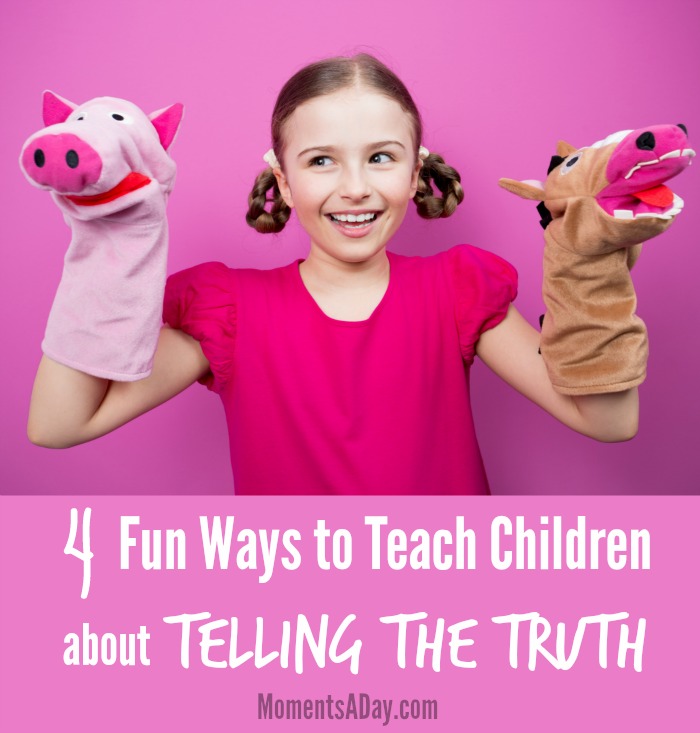
A few months ago I was invited to participate in a parenting panel for a weekly radio show, and the presenter asked me about young kids “tricking” and if this is a serious case of not telling the truth. (You can listen to the full program here.)
I think things are not always as easy as a “truth” or a “lie” in kids’ minds. Make-believe is a very real part of the life of young children and I personally feel that the nature of a “lie” probably indicates how seriously you should take the “trick.”
Was the “lie” told to have fun? Or was it to avoid getting in trouble? You would probably address these situations quite differently.
In my opinion, however, we should not leave discussions about telling the truth until the time we think our children have told a lie. Emotions may run high during any given situation where someone’s truthfulness is in question and the child is probably going to be quite attached to what they have said, defending it no matter what.
If we create playful and hands-on situations to learn about what truthfulness is, before it is needed, then we can help the children distinguish for themselves what “telling the truth” actually means. This way they are prepared with the necessary knowledge when they are faced with a situation in which they are required to take “truth” seriously.
Here are some fun ways to teach children about telling the truth – to prepare them for real life situations when truthfulness is important:
1. Be storytellers
Talk about how some things you hear about are not actually true, but make-believe.
Deciphering truth from fantasy can be tricky, especially things we see on TV. Make up a fantastic story with your child about things that could not be true – such as flying, living in the clouds, or meeting animals that talk. Explain that these stories are fun, but they are not reality (what is true in the real world). Some things we see such as shows with cartoon characters, or hear about like fairies or monsters, are not actually true but “made-up” stories. Discuss when it is okay to pretend and explain that sometimes it is important for us to tell the truth – to say what is actually real.
2. Play a game called “True and False.”
Create signs and learn about discovering truth for yourself.
Make two signs which say “True” and “False” (or T and F if your child cannot read yet). You may like to simply use pieces of paper, or index cards taped to a popsicle stick. Show your child which sign is “true” and which is “false,” and explain what the words mean. Now tell your child some things that might be true or untrue while they hold up the correct sign for what you say. You can take turns where they say things and you hold up the signs, as well. This game reminds us that we should always use our own knowledge to decide what’s true – we do not have to believe without thinking for ourselves. Sometimes we may even need to ask for help and learn new things to discover truth — such as when someone says a statement which is not clearly true or false to us (such as “I am ten feet tall” when we do not know how much ten feet is). Knowing when to ask questions, and remembering to use our minds when we hear things, is important for investigating what is actually truth.
3. Role play with puppets.
Learn what it means to make promises and how it feels when they are broken.
Have a puppet say various promises like, “I will help you put away your toys” or “I will sing a song for you” and have the puppet perform what he said he would. Then use another puppet to do the opposite – say they will do something (such as get a snack or do a dance) and then not do what they said they would. Talk about the importance of doing what you say you will do. This is a good opportunity to review the story of The Boy Who Cried Wolf. Just be sure the version you read is age-appropriate, because some versions of this story can be sad for young children! The Boy Who Cried Wolf (Flip-Up Fairy Tales) is our family’s favorite (Amazon affiliate link). Talk about how important it is for us to tell the truth so that people can trust us.
4. Create a storyboard.
Learn about how you can sometimes be nervous about telling the truth, but that the effort is always worth it.
Draw four boxes on a piece of paper. In the first one, draw a child breaking something and feeling nervous about what would happen. In the second, draw how the child told the truth about what happened. In the third, draw how the parent reacted. In the fourth, draw how the parent helped the child fix what they broke. Tell the story to your child or ask them to tell the story using the pictures. Discuss how it can be hard to tell the truth, but that being truthful is always best. Explain that parents may be sad or disappointed by something that happened, but that they always want their children to tell the truth. A parent will do their best to help the child through a situation, and will be very proud when the child tells the truth even when it was hard.
Will guiding your child through these activities mean they tell the truth every time? Probably not – childhood is all about learning, after all. But you as a parent will have a wider framework for discussing truthfulness with your kids if they have many experiences to think about what it means as a character trait… as opposed to thinking they should tell the truth simply because mom or dad told them to. Most importantly, “truthfulness” can seem like a fun thing – a useful thing, instead of something that they got in trouble for not practicing.
The more children understand about positive character traits, the better the decisions they will be able to make for themselves.
If you liked these activities, you may like to check out my ebook Playing with Purpose: Character Building Made Fun with over 100 activities to teach children about positive character traits. Find out more on this page.
How have you taught your children about truthfulness?
You may also enjoy…
10 {Fun!} Ways to Help Kids Appreciate Diversity
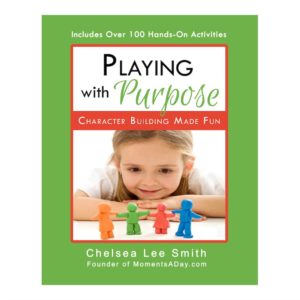

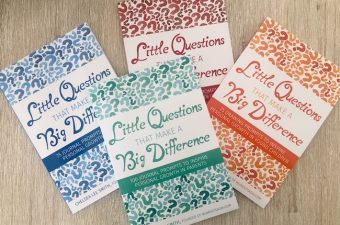

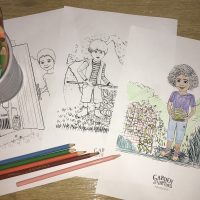

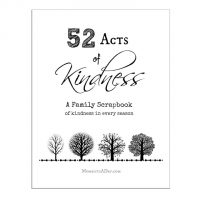
This is great, thank you!
We are just starting to experience some rather ‘interesting’ scenarios with my little boy, who has just tuned 4 (His new toy tractor was ‘parked’ neatly to the side of the room because, it turned out, he thought he had broken it (it wasn’t). And there it stayed, until Dad helped with the tidying up and noticed it tucked to the side – then there was a sudden “But it wasn’t me that broke it” statement! (Oh, really?!)
But it is true what you have said at the beginning, that the times when a child may be in trouble for ‘lying’, is not really a good time to address the basic, underlying issues of right and wrong – true and false.
It is important to find the time and opportunity to teach the value of ‘make believe’ (which we spend a great deal of the day in the submerged in) versus the importance of being able to be truthful when asked – and for the child to be able to KNOW (or ask if not sure, as you pointed out) what the difference is between true and false.
That is REALLY key.
That is a valuable life skill we need to help our children learn well!
Having some simple strategies with clearly defined learning outcomes, to help us as parents and educators, to explore the ideas and concepts around this in a playful way is very much appreciated.
Thank you.
Thanks so much Pam for sharing your experience and insight! I totally agree. “Truth” is a concept we *get* as adults, but truly kids are just learning 🙂 I believe we need to give them review and playful learning experience, just as we would with academic concepts.
This is so important and such helpful advice as always Chelsea, thank you. Pinning!
I think children can find it difficult and your suggestions are wonderful to help them develop this understanding and importance.
You have no idea how much I needed this post Chelsea. I’m having serious issues with Twin blaming her actions on Twin 2. Truth and lie is big in our house at the moment. Your tips are so helpful. I’ll be starting on a couple of these tomorrow. Thank you, it couldn’t have been more timely!
Great ideas Chelsea, it’s such a hard thing to put into practice for little kids!
Such sage advice as usual. Just fab.
I am dealing with my three yr old being sneaky about things he wants but knows he can’t do or have… as I read around the internet one site (theprofessorshouse) stood out for me. It explained how first of all its natural, but also that you have to establish and explain trust to your child. Help them understand how it’s gained and lost why it’s important and what it does for relationships. I’m working on it now and he is slowly responding…you can see his wheels turning as I present opportunities to make the right choice instead of the bad. The website above has some great articles!
Thank you , thank you! My girls are really struggling with this and I feel like its so hard to get them to understand what I mean by “tell me the truth!” This was very helpful and I look forward to using your advice tomorrow!!
So glad you enjoyed the post Cassandra, would love to hear how the activities go with your daughters!